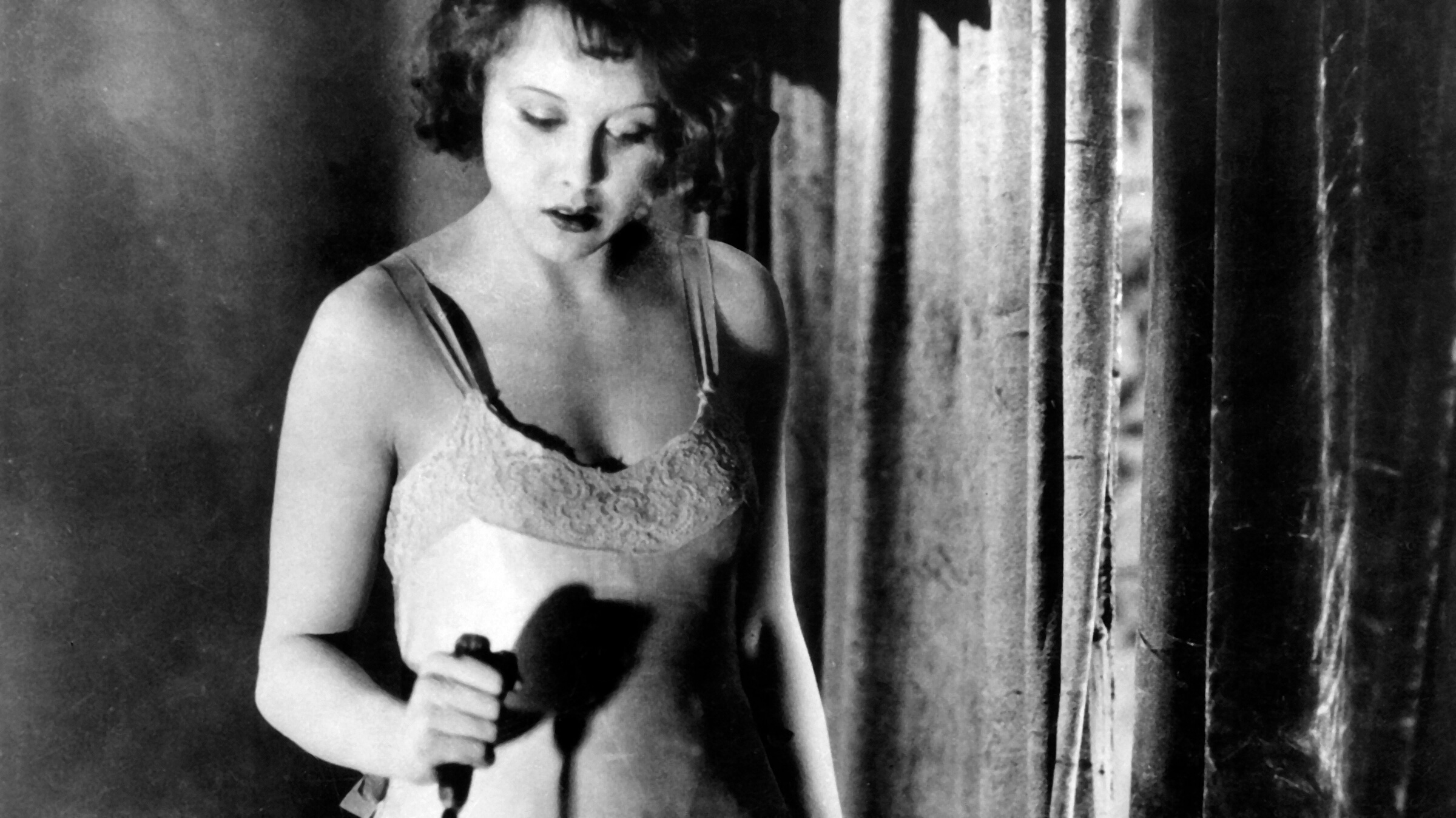Hitchcock’s silent Blackmail is one of the best British films, if not the best, of the late 1920s. Made in 1929, during the transition to the sound era, it was commissioned as both a silent and as a part-talkie with music and some dialogue scenes. With remarkable skill (and an eye to building a solid career in the new medium), Hitchcock managed to produce both a beautifully crafted silent and a groundbreaking sound version. Indeed, he tackled the considerable technical obstacles with such imagination that the latter has tended to obscure the reputation of the silent version, which is in fact superior in a number of ways.
As Hitchcock said, “The silent pictures were the purest form of cinema” and indeed the film contains more shots, more camera movement and the fluidity of the cutting conveys the narrative with greater style. Every scene counts and every shot either enhances the atmosphere or moves the story along. The opening eight minutes of the film is a tour de force of montage in which we see the forces of the law hunt down and “process” a career villain from capture to the police cell. Blackmail displays many of the stylistic elements and themes with which Hitchcock would come to be associated: particularly a fascination with male sexual aggression and female vulnerability. Like the later Sabotage (1936) it features a woman who is protected from the law by her policeman lover. It is also one of a number of Hitchcock’s films to feature a heroine who enters a daze or “fugue” state in which she acts mechanically and apparently without control of her actions—other examples are Murder! (1930), Sabotage and, more ambiguously, Vertigo (1958) and Psycho (1960).
The young Michael Powell (A Matter of Life and Death, 1946), then a stills photographer, claimed to have suggested that the script should lose the third act of the original play, in which it is revealed that no murder has been committed, and end instead with a chase over the dome of the British Museum Reading Room. The Lodger and The Ring both have London locations, but this is undoubtedly the first of Hitchcock’s trademark set-piece finales.
The Restoration
Fortunately the BFI National Archive holds the original negative of the silent version. However the negative had suffered extensively from “curling” as a result of one side of the film stock having shrunk more than the other. This, in combination with very narrow joins between shots, meant careful digital scanning was required to prevent further damage and to make the film lie flat in the scanner’s gate. Without this, the sharpness of the images would have been severely compromised. Eventually, despite the curl of the film emulsion and the delicate splices, a sharp scan with excellent tonal range was achieved.
The film is one of the first features to be scanned on the BFI’s scanner and it has benefited from the use of a wet-gate for sections of the film. In this technology, the film is immersed in a fluid at the point of scanning in order to greatly reduce or eliminate the many fine scratches on the surface. After scanning, which was carried out at 4K resolution, the negative’s remaining damage and several multi-frame tears were removed by digital repair. The intertitles were present at full-length—rather than the “flash-titles” which often exist in other silent negatives—and have been preserved as part of the new master. The dissolves between shots are a crucial part of the film’s narration and, where possible, they have been reconstructed from the two separate shots.
In the end, the restoration has produced an exceptionally clean picture that retains the essence, texture and beauty of the original photography.
Restoration by the BFI National Archive in association with STUDIOCANAL. Principal restoration funding provided by The Hollywood Foreign Press Association and The Film Foundation. Additional funding provided by Deluxe 142, Pia Getty, Col & Karen Needham, and the Dr. Mortimer & Theresa Sackler Foundation
Presented at The Hitchcock 9 event with live music by Mont Alto Motion Picture Orchestra

